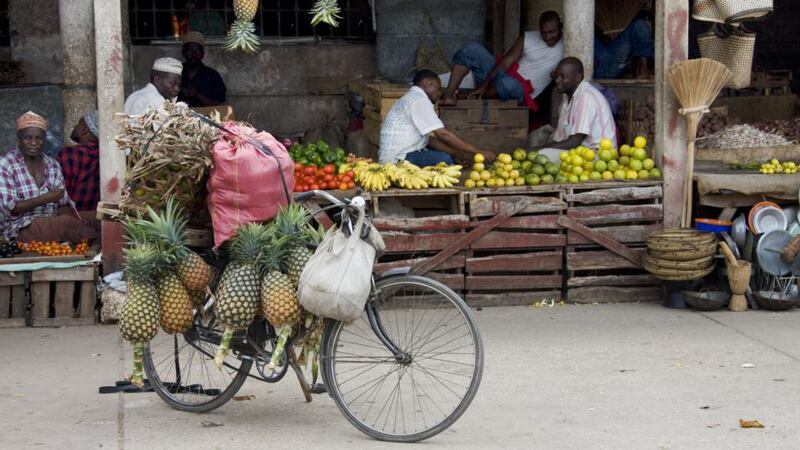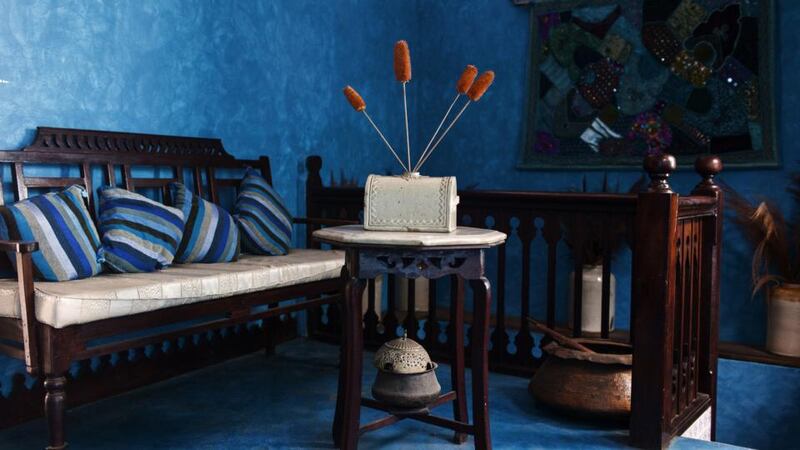The name Zanzibar conjures up visions of sultans’ palaces, paradisiacal beaches and winding alleyways leading to spice-filled bazaars. Indeed, this coral archipelago in the Indian Ocean, 23 miles off the eastern coast of Tanzania, still has many of the features that it did when it was an important trading centre and its historic Stone Town served as the capital of an Omani sultanate. Zanzibar’s largest island, Unguja, is home to most of the cultural attractions, many of them found in beguiling Stone Town, which was awarded Unesco World Heritage status in 2000. In recent years, there’s been a concerted effort to restore and give new life to the city’s distinctive structures. Palaces have been turned into museums and cultural centres, and grand Swahili mansions have been reborn as restaurants and boutique hotels. Yet the coast still offers the “delicious view” that the explorer Sir Richard Burton recorded, of a “cocoa-fringed shore of purest white, and the sea blue as a slab of lapis lazuli”.
Friday 4pm 1. Stone Town Wandering down the narrow lanes of Stone Town in the late afternoon might be this city’s simplest pleasure. Many buildings date to the 19th century, and their most striking feature is their ornate doors. Carved out of mahogany or teak, some Zanzibari doors are adorned with brass spikes, while others have intricate patterns, such as vines or lotus flowers, etched onto them. Standout portals include the golden door at the House of Wonders, the entrance to the Old Fort, and a collection of doors on Baghani Street. A map of Stone Town’s finest doors can be bought for $4 (€3) at the Gallery Bookshop, while a refreshing mango and coconut smoothie ($2.55/€1.65) can be ordered at Lazuli, a tiny cafe with a turquoise door.
6pm 2. Sung poetry The island’s celebrated music genre, called taarab, fuses Swahili, Arab and Indian influences, reflecting the many cultures that have passed through Zanzibar. This style of mellifluous sung poetry accompanied by an orchestra became popular in the 1870s, when it was played in the sultan’s court. Today, visitors can enjoy taarab concerts at the Mtoni Palace Ruins, the one-time residence of a 19th-century sultan. Led by the esteemed musician Mohammed Issa Matona, students from the local Dhow Countries Music Academy perform complex and haunting songs in an open-air courtyard lit by a bonfire. The event ($45/€33) also includes a Zanzibari dinner of coriander-spiced tuna, ginger beef and honeyed dough balls, and, be warned, some goofy historical re-enactments.


9pm 3. Waterfront snacks Take a leisurely stroll through the evening food market at Forodhani Gardens, a popular meeting place on the waterfront. The park received a face-lift several years ago, and now has walkways, better lighting and plenty of benches. There are dozens of stalls, selling everything from fish skewers to spicy soup to mango slices dusted with chilli salt (6pm to 10pm). Even if you can’t eat another bite, try a cup of hand-cranked sugar cane juice infused with ginger and lime. 10pm 4. Night-time diversions As in many conservative Muslim cities, the night life here verges on sleepy, yet there are pockets of liveliness.
At the waterfront institution, Mercury’s, live music on weekends does its best to channel the hometown hero Freddie Mercury, who was born in Zanzibar in 1946. For swankier surroundings and less chance of hearing off-key Queen covers, head to the chic rooftop lounge at the Maru Maru hotel for a dawa cocktail, made with the molasses-flavoured Tanzanian spirit Konyagi, honey and lime; and views overlooking the 17th-century Old Fort. Saturday 9.30am 5. Spice Island Yes, it’s touristy. And yes, there will be teenagers twisting coconut leaves into crowns for you in the hope of a tip. But no, you should not skip taking a tour of the famous spice plantations. Guides tell how spices such as cardamom, nutmeg, vanilla and cloves are harvested, although what’s most surprising is seeing where they come from – black peppercorns from a climbing plant more than three metres’ high; cinnamon from the inner bark of a slim tree. Many spice tours (from $15/€11) also stop at the nearby ruins of the 1882 Maruhubi Palace, where one sultan housed a large harem, and the Kidichi Persian Baths, which date from 1850.
12.30pm 6. Italian accent Situated inside a gorgeously restored 18th-century merchant home, the House of Spices restaurant serves Indian Ocean fare with an Italian accent. The dining room, a covered terrace once used for drying spices before they were packed for shipment, is a breezy, relaxing place, painted green and full of plants and antique cabinets. Here, well-executed dishes such as black marlin (23,000 shillings/€10) and an exceptional seafood ravioli in saffron sauce (14,500 shillings/€6). Desserts such as chilli-chocolate mousse are creative, while cinnamon iced tea hits the spot on a hot day.
2pm 7. White sand Choosing which beach to visit is a hard decision, thanks to the abundance of spectacular options. The most pristine white sand beaches are found along the island’s east coast, abutting the villages of Matemwe, Pongwe and Jambiani, about an hour’s drive away. An excellent option closer to town is the secluded Mangapwani Beach, on an idyllic stretch of sand 14 miles north of the city. Although many go with just a towel and a swimsuit, there are fancier options too: The nearby Mangapwani Serena Beach Club offers daybeds, changing rooms and a restaurant. It’s a good idea to consult a tide predictor app before hitting the beach though, as the ocean recedes for miles at low tide.
6pm 8. Feast at sunset Since opening a few years ago, the Tea House restaurant at the Emerson Spice hotel, perched on the roof of a historic Swahili mansion, has become the city’s choice spot for sundowner cocktails followed by dinner. The sun begins setting over the water at around 6pm, by which time you should already have a cold gin and tonic in hand. Dinner, served at 7pm, is a degustation menu where each of the courses uses traditional Zanzibari ingredients, but in playful combinations ($30/€22). An appetiser of calamari-stuffed tomato with coconut relish and passion fruit ceviche might be followed by lobster in vanilla sauce, or clove-toasted kingfish.
9.30pm 9. Hookah Break One of Stone Town’s most appealing architectural relics, the Old Dispensary, has a hookah bar on an ocean-facing balcony on the second floor. The Three Bees offers about 70 types of shisha, including a few, such as cinnamon and jasmine, that seem particularly suited to an island shaped by the spice trade (5,000 shillings/€2.20). No alcohol is served here, but fruit-based mocktails, such as the Royal Forodhani, with mango, avocado, ginger and lime, are a delicious alternative (4,500 shillings/€2).
Sunday 8.30am 10. Serious coffee East African coffee is some of the finest in the world, and the top spot in Zanzibar for a serious cup is at the pint-size cafe and roaster, Msumbi Coffee. This charming cafe, with burnt-sienna walls decorated with vintage photos and shelves made from wooden dhow boats, specialises in single-origin Arabica coffee grown at very high altitudes in Tanzania, Rwanda and Ethiopia. Order a cappuccino made from beans picked on the slopes of Mount Kilimanjaro (4,000 shillings/€1.70) to go with one of the cafe’s tasty breakfast platters, such as fried eggs, avocado and sausage (6,500 shillings/€2.80).
10am 11. Sea creatures With its Technicolor coral reefs inhabited by more than 400 species of fish and warm, clear water, the Chumbe Island Coral Park, a marine protected area, is a spectacular place to snorkel (day trips, $90/€66; closed during the spring rainy season). This uninhabited island off Zanzibar’s west coast only admits 14 people a day, which means that the unicorn fish, hawksbill turtles, Moorish idols and other sea creatures can carry on in relative peace while humans float above them. After snorkelling, visitors are given a tasty Zanzibari lunch, and guided through the island’s lush forest.
The Details:
Doors, the Old Fort; House of Wonders, Baghani Street; Gallery Bookshop, 48 Gizenga Street; zanzibargallery.net. Lazuli, off Kenyatta Road; 255-77-6266-6679.
Mtoni Palace Ruins, Malawi Road; mtoni.com.
Forodhani Gardens, waterfront, off Mizingani Road.
Mercury’s, Mizingani Road; 255-77-741-3081. Maru Maru Hotel, 397-400 Gizenga Street; marumaruzanzibar.com.
Spice tour, Maruhubi Palace Ruins, Malawi Road. Kidichi Persian Baths, Kidichi.
House of Spices, Kiponda Street; houseofspiceszanzibar.com.
Beaches, Matemwe; Pongwe; Jambiani. Mangapwani Serena Beach Club, serenahotels.com/serenazanzibar/todoBeachClub-en.html. Emerson Spice, emersonspice.com. The Three Bees, Old Dispensary, Mizingani Road; 255-77-713-0320. Msumbi Coffee, Zanzibar House, near Kelele Square; 255-684-542-582. Chumbe Island Coral Park, chumbeisland.com. Note: This attraction closes for two months a year, generally from early to mid-April to early to mid-June.
©The New York Times 2014, distributed by The New York Times Syndicate










